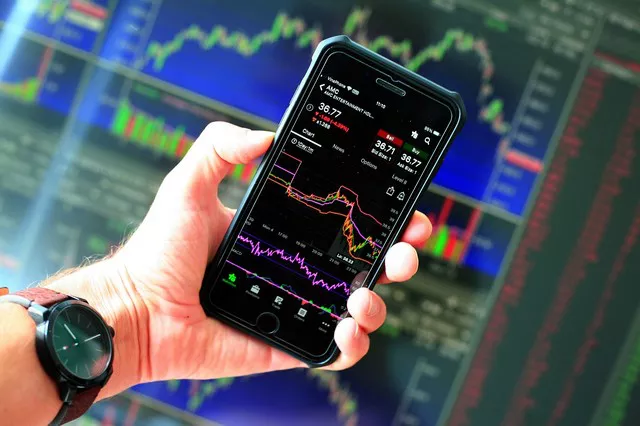In the world of financial markets, E-mini futures contracts serve as popular instruments for traders looking to speculate on the price movements of various assets, including stock market indices, commodities, and currencies. Understanding the value of an E-mini futures point is essential for traders, as it determines the potential profit or loss associated with each price movement. By grasping the intricacies of how E-mini futures points are calculated and valued, traders can make informed decisions and manage their trading strategies effectively.
Introduction to E-mini Futures Points
E-mini futures points represent the minimum price increment or movement by which the price of an E-mini futures contract can change. They serve as the basic unit of measurement for tracking price changes and determining the profit or loss on a futures trade. The value of an E-mini futures point varies depending on the underlying asset of the futures contract, such as a stock market index, commodity, or currency pair. Understanding how E-mini futures points are calculated and valued is crucial for traders seeking to navigate the futures markets with confidence and precision.
Calculating E-mini Futures Points
The value of an E-mini futures point is determined by the tick size and tick value of the futures contract. The tick size refers to the minimum price increment by which the price of the futures contract can change, while the tick value represents the monetary value of each tick movement. For example, if the tick size of an E-mini futures contract is 0.25 points and the tick value is $12.50, then each point movement in the price of the contract corresponds to a change in value of $50 ($12.50 * 0.25).
Understanding Tick Sizes and Tick Values
Tick sizes and tick values vary across different E-mini futures contracts and are determined by futures exchanges such as the Chicago Mercantile Exchange (CME) or the Intercontinental Exchange (ICE). These exchanges establish tick sizes and tick values based on factors such as the volatility, liquidity, and trading characteristics of the underlying asset. For example, E-mini futures contracts on highly liquid assets such as stock market indices may have smaller tick sizes and tick values compared to contracts on less liquid assets such as commodities.
Example: E-mini S&P 500 Futures
As an example, let’s consider the E-mini S&P 500 futures contract, one of the most widely traded futures contracts in the world. The tick size of the E-mini S&P 500 futures contract is 0.25 points, and the tick value is $12.50. This means that each point movement in the price of the contract corresponds to a change in value of $50 ($12.50 * 0.25). For instance, if the price of the E-mini S&P 500 futures contract increases by one point from 4000 to 4001, the value of the contract would increase by $50.
Profit and Loss Calculation
Understanding the value of an E-mini futures point is essential for calculating the potential profit or loss on a futures trade. Traders can determine their profit or loss by multiplying the number of points gained or lost in the price of the futures contract by the value of an E-mini futures point. For example, if a trader buys one E-mini S&P 500 futures contract at a price of 4000 and sells it at a price of 4010, the trader would realize a profit of $500 (10 points * $50 per point).
Leverage and Risk Management
The value of an E-mini futures point plays a crucial role in leverage and risk management for futures traders. Leverage allows traders to control large positions with a relatively small amount of capital, amplifying both potential profits and losses. While leverage can enhance returns, it also increases the risk of significant losses if trades move against the trader. By understanding the value of an E-mini futures point and managing leverage effectively, traders can mitigate risk and protect their trading capital.
Market Volatility and E-mini Futures Points
Market volatility can impact the value of an E-mini futures point, as higher volatility often results in larger price movements and greater profit or loss potential. During periods of heightened volatility, the value of an E-mini futures point may increase, reflecting the increased uncertainty and risk in the market. Traders should be mindful of market volatility and adjust their trading strategies and risk management techniques accordingly to navigate volatile market conditions effectively.
Trading Strategies and E-mini Futures Points
Understanding the value of an E-mini futures point is integral to developing effective trading strategies in the futures markets. Traders may employ various strategies, such as trend following, mean reversion, and momentum trading, to capitalize on price movements and profit from changes in market sentiment. By incorporating the value of an E-mini futures point into their trading strategies, traders can make informed decisions and optimize their risk-reward profiles.
Conclusion
In conclusion, the value of an E-mini futures point is a fundamental concept in futures trading, determining the potential profit or loss associated with each price movement of a futures contract. By understanding how E-mini futures points are calculated and valued, traders can make informed decisions, manage their trading capital effectively, and navigate the complexities of the futures markets with confidence. Whether trading stock market indices, commodities, or currencies, a thorough understanding of E-mini futures points is essential for success in futures trading.


